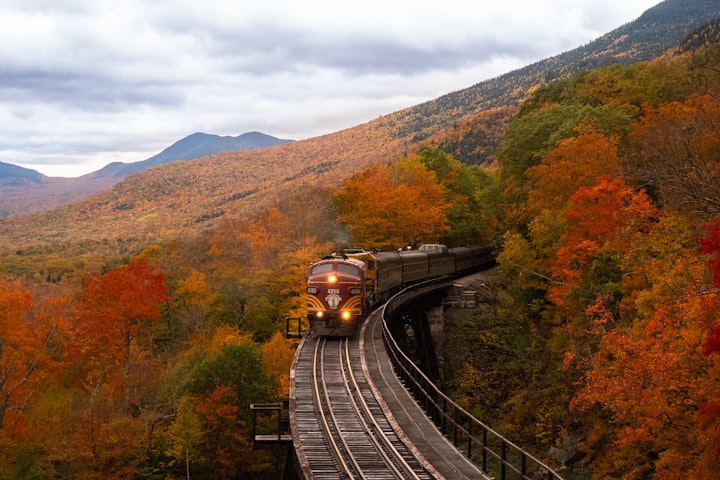
**The Evolution of Trains: A Journey Through History**
The history of trains is a fascinating tale that spans centuries and continents, marked by innovation, industrialization, and societal transformation. From humble beginnings as primitive steam-powered machines to sleek, high-speed locomotives of the modern era, trains have played a pivotal role in shaping the world we live in today. This journey through history will explore the key milestones, technological advancements, and cultural impacts of trains over the past few centuries.
**Early Beginnings:**
The concept of using rails or tracks for transportation dates back to ancient times. The Greeks, Romans, and Chinese all utilized rudimentary systems of carts or wagons running on wooden or stone tracks. However, it wasn't until the 18th century that significant advancements in steam power laid the groundwork for the development of the modern train.
**The Birth of Steam Locomotion:**
In the early 19th century, the invention of the steam engine by James Watt revolutionized transportation. In 1804, Richard Trevithick built the first steam-powered locomotive in Wales, demonstrating its potential for hauling heavy loads. However, it was George Stephenson's "Rocket," built in 1829 for the Liverpool and Manchester Railway, that marked the true beginning of the railway age. The Rocket could reach speeds of up to 29 miles per hour, setting a new standard for efficiency and reliability in transportation.
**The Age of Expansion:**
Throughout the 19th century, railways proliferated rapidly across Europe, North America, and other parts of the world. Railways became crucial for industrialization, facilitating the transport of goods and people over long distances more quickly and affordably than ever before. In the United States, the completion of the First Transcontinental Railroad in 1869 linked the East and West coasts, spurring westward expansion and economic growth.
**Technological Innovations:**
The 19th century also saw significant technological advancements in railway engineering. Improvements in track design, such as the use of steel rails and stronger bridges, made railways safer and more reliable. The introduction of the telegraph enabled better communication between stations and trains, enhancing efficiency and coordination. Additionally, the development of more powerful steam engines, such as the "Mallard" in 1938, pushed the limits of speed and performance, culminating in the era of steam locomotives.
**Electrification and Dieselization:**
The early 20th century witnessed the gradual electrification and dieselization of railway networks. Electric trains, first introduced in the late 19th century, offered smoother acceleration, quieter operation, and reduced pollution compared to steam locomotives. The first electrified railway line opened in 1904 in England, and by the mid-20th century, electric and diesel locomotives had become widespread, especially in urban areas and on high-speed lines.
**The Golden Age of Rail Travel:**
The interwar period, particularly the 1920s and 1930s, is often regarded as the golden age of rail travel. Luxurious passenger trains, such as the Orient Express and the Super Chief, offered unparalleled comfort and elegance, catering to affluent travelers with gourmet dining, opulent sleeping accommodations, and personalized service. Rail travel became synonymous with glamour and sophistication, immortalized in literature, film, and popular culture.
**Decline and Revival:**
However, the mid-20th century also brought challenges for the railway industry. The rise of automobiles, airplanes, and interstate highways posed stiff competition to railroads, leading to declining ridership and profitability. Many railway companies struggled financially, and numerous branch lines were abandoned or dismantled. Despite these setbacks, railways persisted as vital arteries of transportation, especially for freight and commuter services.
**Modernization and High-Speed Rail:**
In recent decades, there has been a renewed interest in rail transportation, driven by concerns over climate change, urban congestion, and energy security. Governments around the world have invested in modernizing existing rail infrastructure and developing high-speed rail networks capable of rivaling air travel for speed and efficiency. Countries like Japan, France, and China have led the way in high-speed rail technology, with trains reaching speeds of over 200 miles per hour.
**Environmental Sustainability:**
One of the key advantages of trains is their relatively low environmental impact compared to other modes of transportation. Electric and hybrid trains produce fewer greenhouse gas emissions per passenger mile than cars or airplanes, making rail travel an attractive option for reducing carbon footprints and combating climate change. Furthermore, the electrification of railways can be powered by renewable energy sources, further enhancing their environmental credentials.
**Challenges and Opportunities:**
Despite their many benefits, trains face several challenges in the 21st century. Aging infrastructure, capacity constraints, and funding shortages continue to hamper the expansion and modernization of rail networks in some regions. Additionally, emerging technologies such as autonomous vehicles and hyperloop systems present new competition and potential disruptions to traditional rail transportation.
**Conclusion:**
The history of trains is a testament to human ingenuity, perseverance, and adaptability. From their humble beginnings as steam-powered contraptions to the sleek, high-speed marvels of the modern era, trains have continuously evolved to meet the changing needs of society. As we look to the future, trains will likely remain a vital component of our global transportation infrastructure, connecting people, cultures, and economies in an ever-changing world.
About the Creator
Enjoyed the story? Support the Creator.
Subscribe for free to receive all their stories in your feed. You could also pledge your support or give them a one-off tip, letting them know you appreciate their work.






Comments (1)
Hello there! I'm quite the world traveler myself and I've come to appreciate the serenity of train travel. Sure, it might take a bit longer to reach your destination compared to other modes of transport, but the scenic views and the camaraderie among fellow passengers make it worthwhile. Amtrak - https://amtrak.pissedconsumer.com/review.html is one of my top choices for train travel - it offers top-notch service, travel comfort, and surprisingly affordable ticket prices.